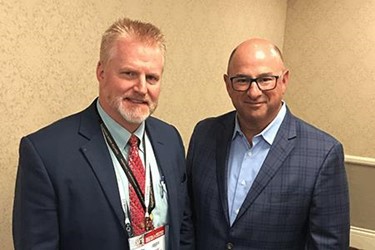What Are Sugar-Engineered Antibodies?
By Rob Wright, Chief Editor, Life Science Leader
Follow Me On Twitter @RfwrightLSL

Ever heard of sugar-engineered antibodies (SEAs)?
If you answered “no,” don’t worry, I hadn’t either. Well, let me clarify. While putting together some questions to guide my interview with Clay Siegall, founder, president, CEO, and chairman of Seattle Genetics, I had come across some information about SEAs on the company’s website. As I hadn’t heard or read much about the technology previously, it seemed a good topic to broach while meeting with him in San Francisco during the 36th Annual J.P. Morgan Healthcare Conference (JPM). His response was intriguing, yet concise, and we created a small sidebar about SEAs to be included in the March 2018 print cover feature in Life Science Leader magazine. Unfortunately, as sometimes happens, we ran into one of the constraints of print publishing — space limitations. As such, we added Siegall’s SEA insights to Life Science Leader’s exclusive Beyond The Printed Page online section of the magazine. If you like what the Seattle Genetics founder has to say on SEAs, you may want to check out the four other Beyond The Printed Page articles involving Siegall (see below list). Consider subscribing today at our current special rate of $49 (enter coupon code ED49). For while Beyond The Printed Page remains free, accessing all the great content Life Science Leader magazine has to offer requires a subscription.
- Clay Siegall Reveals What Surprised Him Most From Founding Seattle Genetics
- Seattle Genetics Legacy Of Partnering
- The Story Behind Seattle Genetics’ Unintentional-Startup Incubator
- How Seattle Genetics Got Bill Gates And Paul Allen As Investors
What Are Sugar-Engineered Antibodies?
One of the new technologies Seattle Genetics is working on is sugar-engineered antibodies. “This is something we developed internally while researching ways to make antibodies more powerful,” says Clay Siegall, founder, president, CEO, and chairman of Seattle Genetics. “Antibody-drug conjugates (ADCs) are empowered antibodies. But our SEA technology also can empower ADCs, but in a different way.” According to Siegall, SEA makes an antibody non-fucosylated. “There are other technologies that de-fucosylate (i.e., get rid of 60 to 70 percent of the fucose on an antibody),” he explains. “Our SEA technology gets rid of 100 percent of fucose.”
Fucose is an essential hexose deoxy sugar the body uses to communicate from cell to cell. Some studies have shown that fucose may play a role in cancer and its treatment.
“A non-fucosylated antibody has a dramatically improved effector function, and results in an enhanced innate immune response against cancer,” he attests. The company’s proprietary SEA technology is a novel approach to increasing the potency of monoclonal antibodies, and is complementary to its ADC technology. Seattle Genetics already has one of its sugar-engineered antibodies (SEA-CD40) in clinic, and expects to do more. That said, Siegall is quick to remind that the company’s SEA technology isn’t its major thrust. “ADC technology is where we are spending 75 to 80 percent of our efforts,” he clarifies. “The other 20 or so percent involves a variety of different types of non-ADC technologies, not just SEA.”
